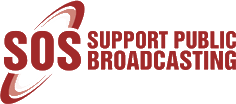DoC proposes Community Broadcasting support scheme
September 25, 2015
SOS Submission – Draft Community Broadcasting Support Scheme
September 30, 2015Roundtable Discussion: Draft Community Broadcasting Support Scheme
Various members of the broadcasting community gathered at Constitutional Hill to discuss the Department of Communications draft proposal for the Community Broadcasting Support Scheme.
The discussion was set to gather public opinion in order to diversify views and unpack some of the issues detailed in the draft proposal.
The proposal states the department’s intentions to provide support for community television and radio stations through various avenues.
Members from the National Association of Broadcasters, National Community Radio Forum, SOS: Support Public Broadcasting Coalition, and representatives from the community radio and community television sectors expressed their concerns and delight with the recommendations set out in the document.
One of the issues raised in terms of the draft was that some of the drafts proposed were ambiguous and needed clarification.
One of the largest concerns was with regards to the funding distribution policy. Representatives from the radio industry found that they were getting too little, whereas, community TV broadcasters argued that the industry has been side-lined for far too long and the proposed funding distribution ratio of 70% for television and 30% for radio, was the redress the industry needs.
The representatives highlighted these as what they though where the good aspects of the draft: The document fleshes the issues within the government that need to be addressed and resolved.
The panel agreed that the draft should be commended for the following:
- They welcomed the South African Music Rights Organisation (SAMRO) assistance that was acknowledged in the document
- An emphasis on the need for independent research was pointed out; the Broadcasting Research Council was recommended as a potential source to undertake the task.
- Governance has been the most challenging for the sector
What was problematic?
- Powers of the minister
- There is a need for subsidies from the Digital Radio Mondiale (DRM) and (Digital Audio Broadcasting+) DAB+ for signal distribution
- There is nothing in the proposal for self-providing stations
- The Budget allocation of 70%: 30% needs to be addressed and be “fair”. There are also concerns about what 30% of the pie means in monetary value.
- The draft does not provide a timeline for implementation of the support scheme.
- Government needs to generate more ad spend and advertising in the industry.
- Particularly in radio, it is problematic that the number of stations who are licenced is large. A moratorium on issuing licences is needed.
- There needs to be a closer definition of the term “community”. The scheme must distinguish between public and community.
- The draft states that there will be only support for Community Television that isn’t on pay-tv. Will they continue to receive funding?
- In terms of government spend on content (e.g., documentaries and dramas), what will happen when the content supported by the scheme goes to the pay-tv platform?
- The policy must make it easy to apply for funding
- The Government Communication and Information System (GCIS) is not spending enough on the media
- For community radio, 30% funding will not actually help
- The document is unclear about helping self-providing stations with transmission, start-up costs, and distribution.
- What does, “if funding is available” mean?
A draft proposal for the advancement of community radio and television sector was issued by the Department of Communication in June. The draft states the department’s intentions to support the community broadcast industry. The public has been given until 30 September 2015 to provide comment and submissions.
